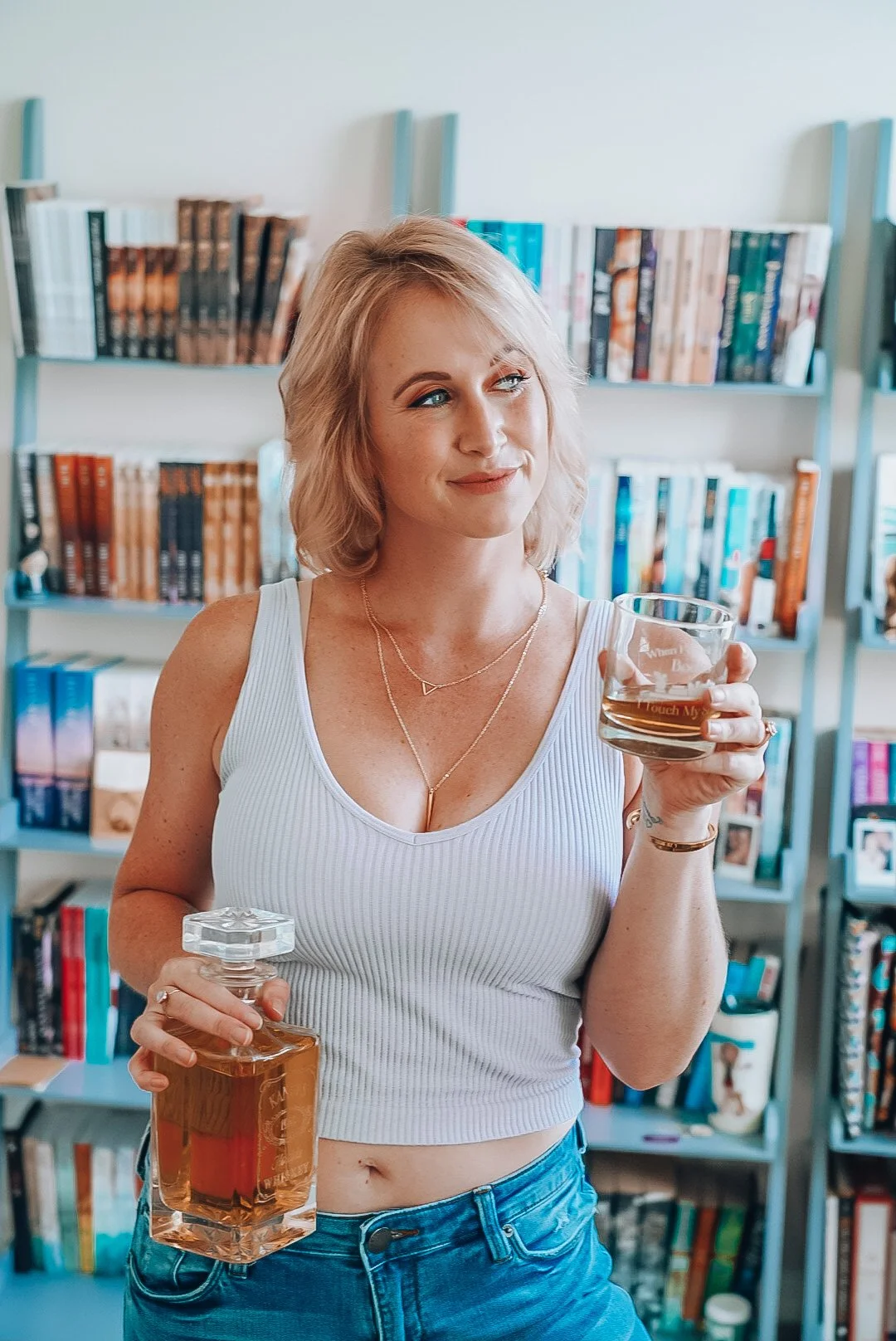Spotlight: Lineage by Steven Kent Mirassou
/A unique blend of memoir and historical narrative, Lineage gives the reader a behind-the-scenes view of what is means to be a wine maker: how it looks and feels to be in a vineyard heavy with grapes, awaiting the dawn and the throbbing pulse of a harvest about to begin. But it’s also a tale of challenges: rough growing seasons, business mistakes, the loss of cherished vineyards, and more.
Lineage shares Mirassou’s connection to the six generations that his family has been growing grapes and crafting wines in California, the last thirty years in the Livermore Valley. It’s a region that struggles, image-wise, in the shadow of the Napa Valley but holds fast to its belief in the virtues of its hills and valleys and fertile soils, and to its unshakable faith that crafting beautiful wines and sharing them with others is, at its core, good for the heart and pure tonic for the soul.
Beautifully packaged with photos throughout, Lineage is ultimately a lover letter to wine making, by someone who feels a deep connection to the craft.
Excerpt
Bone and Sinew
My family has been making wine in the U.S. longer than any other, seven generations—165 years, now that my son, Aidan has become our Assistant Winemaker. Every time I walk into my tasting room, I see the stolid countenances of the early generations of the family posed and stiff and formal. And these pictures have traveled, like treasured keepsakes, from our first tasting rooms at Mirassou, then to the re-invented brand under Gallo ownership where they were just curios in a marketing campaign, and then onto my walls, the rightful heir. As often as I had seen those sepia-ed photos when I was a kid running around the fermenters and disgorging champagne, the family legacy was never truly a part of my bone and sinew until I made my first vintage of wine nearly 20 years later. And 25 years after that, with the next generation working alongside me, I know now that I will be on that wall at some point too, and that my issue—more generations of our singular lineage—will view that old man and wonder, why the sly smile?
With each passing harvest, each fermenter dragged clean, vintage after vintage; each wine resting in barrel, growing in roundness, growing in excellence; each season tasting the wines of my team’s labor, I realize, many years into my journey, that I had met a vocation commensurate to my capacity for idealism. More than simply the pursuit of personal excellence, I have come to understand that my time in my work, however long it should last, will be but one circle nested inside larger concentric rings. There is the circle of my family, and its role in California wine. My great-great-great grandfather is reputed to have been the first to bring Pinot Noir and Mourvèdre to California in 1854. He was certainly the first to bring the French prune, its shriveled fruit laying the cornerstone for a huge industry in Santa Clara County over the next century-and-a-half. The fortunes of the family waxed for a short time until they didn’t anymore, and it falls to me and my son to redeem what had not been fully realized.
California is also a ring. The state conjures up for many a sun-soaked vinous Utopia, home to voluble, ebullient wines. Its earliest efforts are known only to a few, being too young and too far removed from the European centers of wine to drop much of a pebble in the larger pond. The origin story of California presaged many of the booms and busts the state would experience after the gold rush in 1848 created it; its wines were only curiosities at the margins of an old empire until the Paris Tasting in 1976 proved to be a rush of its own, rolling out at nearly the same pace.
The greatest concentricity is the story of wine itself. Wine is the story of wars, the story of and by the poets; it is the harbinger of culture, the loosener of tongues; it celebrates births and memorializes those gone; wine is a multi-billion-dollar business, undertaken mostly by tens of thousands of us who can barely pay our bills. Wine ultimately connects all of us who drink, and binds us all, through its vineyards, to the very beating heart of the green world.
My son, Aidan, is one of the more wonderful people I know. Strong and sensitive, open to the possibilities of the world, if not always eager to search for them. He started out in our tasting room when he was a teenager, polishing glasses, emptying dump-buckets, throwing out the garbage, the same mundane but needed tasks that I did at his age, though mine took the form of warehouse and bottling-line work. My strategy for sharing generational progress was to show him as much of my world as possible, to put the best wines possible in front of him, to share my enthusiasm with him, to take him into the cellar to see what went on out of view of the customer. I hoped he would catch on, would be as awed as I was at the thought and act of making something beautiful.
His first couple of years in the cellar were a continuation of the scut work he did in the tasting room before he began to be looked upon as a potential heir there, not the boss’s kid, but one who would create the paths forward. Winemaking seems like high living but only to those who haven’t really seen it. It’s mostly about being clean. There are a lot of bugs in a winery. Some are benevolent and bring about the fundamental and magical transformation of juice to wine, and some seek only to loose the microscopic dogs of war upon our otherwise civilized endeavor. It is the winemaker’s job (really, the cellar rat’s) to make sure as few havoc-wreakers as possible make contact with the stuff we’ll eventually drink. So, Aidan washed a lot of fermentation bins, washed a lot of pumps, washed a lot of buckets and beakers and tanks and presses. One of the points you’re trying to slam home is the tenuousness of this thing that we do, the fragility of the wine, its susceptibility, left unwatched, to run to vinegar. One of the best ways to illustrate this is, I think, to believe in the theory of germs as one would believe in the Old Testament holy father...to take it on faith that one moment of un-virtue leads to death. The kid survived his baptism quite nicely. His room may be a fucking mess, but you can eat off his fermenters.
Within our cabal, the woebegone life of the cellar rat is really one of great dignity. The person who knows the value of order-following and clean-making is held in high esteem. Aidan was this person then and is to a much greater degree that self-same person now. Beth Refsnider, another Assistant Winemaker, hired in 2018 as a production assistant, has assumed this role presently, and she has the makings of greatness.
Attuned to nuances, aggressively searching out the work and the tasting opportunities, she will have control of her destiny in this business.
As each season rolled on, Aidan was given more responsibility, introduced more and more to the esthetic side of the craft, and given more and more a window into the whys of what we do. In 2017, my assistant winemaker, at the time, left to take a similar position with another winery in town, and Aidan stepped up to take over that set of responsibilities, that he wanted the job and was ready to become one of the initiates into our glorious and bedraggled order. He has embarked on his path, learning from his father, discarding those things that do not ring true to him, learning and doing, aspiring and fulfilling, perhaps in some Freudian way killing the father to lay with the dame, wine. Around the circumference of his ring or along the next knot on his line, over the years, from one harvest to another, he will draw out his own chord of the family lineage.
Reprinted from Lineage: Life and Love and Six Generations in California Wine with the permission of Val de Grace Books. Copyright © 2021 by Steven Kent Mirassou.
Buy on Amazon
About the Author
Steven Kent Mirassou is an acclaimed winemaker and a descendant of one of the oldest and most respected wine families in California. Passionate about writing too, he received his BA in American Literature from the George Washington University and his MA in Literature from NYU. Steven was born in the Salinas Valley and grew up in San Jose and Los Gatos before going east to college. He started his wine career in sales but found his true passion after moving into the production side of the business in 1996. Steven has made the highest rated wines from the Livermore Valley, and he is a co-founder of the Mount Diablo Highlands Wine Quality Alliance and the President of the Livermore Valley Wine Growers Association. Lineage: Life and Love and Six Generations in California Wine is his first book. Steven has four adult children and he lives in Pleasanton, California, with his fiancée, Nancy Castro, and their three dogs.

















































